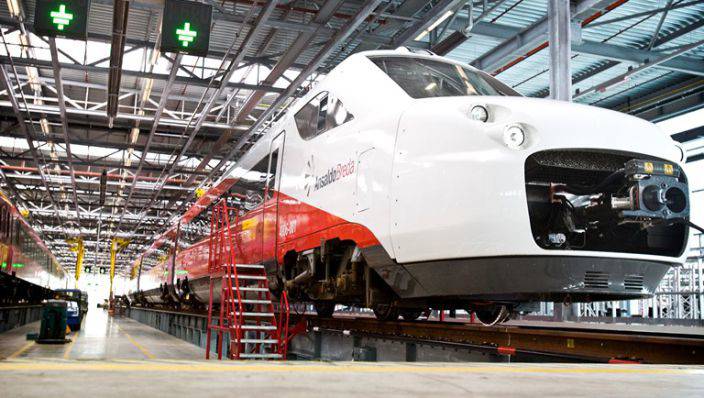Headache File and error festival, with the flash train Fyra went twenty years almost everything wrong that could go wrong.
 The parliamentary inquiry commission that investigated the debacle, pulled hard forward to years of mismanagement by all the Ministers and Secretaries of State and railway company NS.
The parliamentary inquiry commission that investigated the debacle, pulled hard forward to years of mismanagement by all the Ministers and Secretaries of State and railway company NS.
From the very beginning to the very end: seven key mistakes that made the fiasco with the Fyra inevitable.
1 Without a clear plan to build an expensive railway
In 1996 decides Cook-final first cabinet that connects a high-speed rail comes to the Randstad Belgium and France. Between Antwerp and Amsterdam, a railway is being constructed where trains 300 kilometers per hour can ride. How often these trains running there and who exactly will use it, is unclear. What is certain is that it will cost 7.5 billion guilders and that its 1.8 billion guilders to be recouped.
2 Netherlands and Belgium made no firm commitments
The Dutch government will energetically work on the construction of the Amsterdam-Rotterdam-Breda. The idea is that the rail service to Antwerp and Brussels, a collaboration between the Dutch and Belgian rail carrier will be. But while Netherlands or paying for the construction of the Belgian high-speed railway, there will be only at the last moment, in 2012, agreements on paper. The agreed connection Hague and Brussels is due to expire Belgian press at the last minute.
3 NS offered way too much money for the journey
NS is from the beginning afraid of losing the dominant position on the Dutch track in a foreign competitor and wants the new program, which is the cost of cost in tow. The offer of NS is ridiculously high. At the Ministry of Transport have any doubt right away, but it nevertheless agrees.

4 Ingewikkelde treinen bestellen die nog gemaakt moeten worden
Om de snelle verbinding tussen Amsterdam en Brussel tot stand te brengen, moeten er moderne snelle treinen komen. Maar NS en de Belgische NMBS stellen eisen waar geen enkele bestaande trein aan kan voldoen. Een nieuwe trein ontwerpen, is zo duur dat maar twee bedrijven, Alstom en AnsaldoBreda, een offerte indienen. Als het aantal bestelde treinen ook nog eens minder wordt, trekt Alstom zich terug.
5 NS greep niet in toen de treinen niet deugden
Als enige overgebleven bedrijf gaat het Italiaanse AnsaldoBreda in 2004 aan de slag. Vanaf het begin is duidelijk dat de oorspronkelijke levertijd van drie jaar niet gehaald wordt. Ook is er al snel twijfel over de kwaliteit van de treinen. Ondanks kritiek van Nederlandse rapporteurs grijpt NS niet in en gaat de bouw gewoon door. De treinen rollen uiteindelijk vijf jaar te laat uit de fabriek.
6 Inspectie bekeek de nieuwe Fyra's nooit in het echt
Dat de treinen niet deugen, blijkt al direct nadat ze op het Nederlandse spoor rijden. Dat ze überhaupt werden toegelaten, komt omdat de Inspectie Leefomgeving en Transport (ILT) de treinen nooit in het echt bekeek. De toelating werd volledig beslist op basis van rapporten en bouwtekeningen.
7 Er was geen plan B
Door alle vertraging met de Fyra's is er nauwelijks mee getest als ze in december 2012 in gebruik worden genomen. En hoewel er grote twijfels waren over de betrouwbaarheid, wordt geen terugvalmogelijkheid, zoals de Beneluxtrein, achter de hand gehouden. Als de Fyra's in januari uitvallen, is er geen rechtstreekse treinverbinding meer tussen de Randstad en Brussel, op de dure Thalys na.
© metronieuws.nl/Rens Oving/

Reactie plaatsen
Reacties